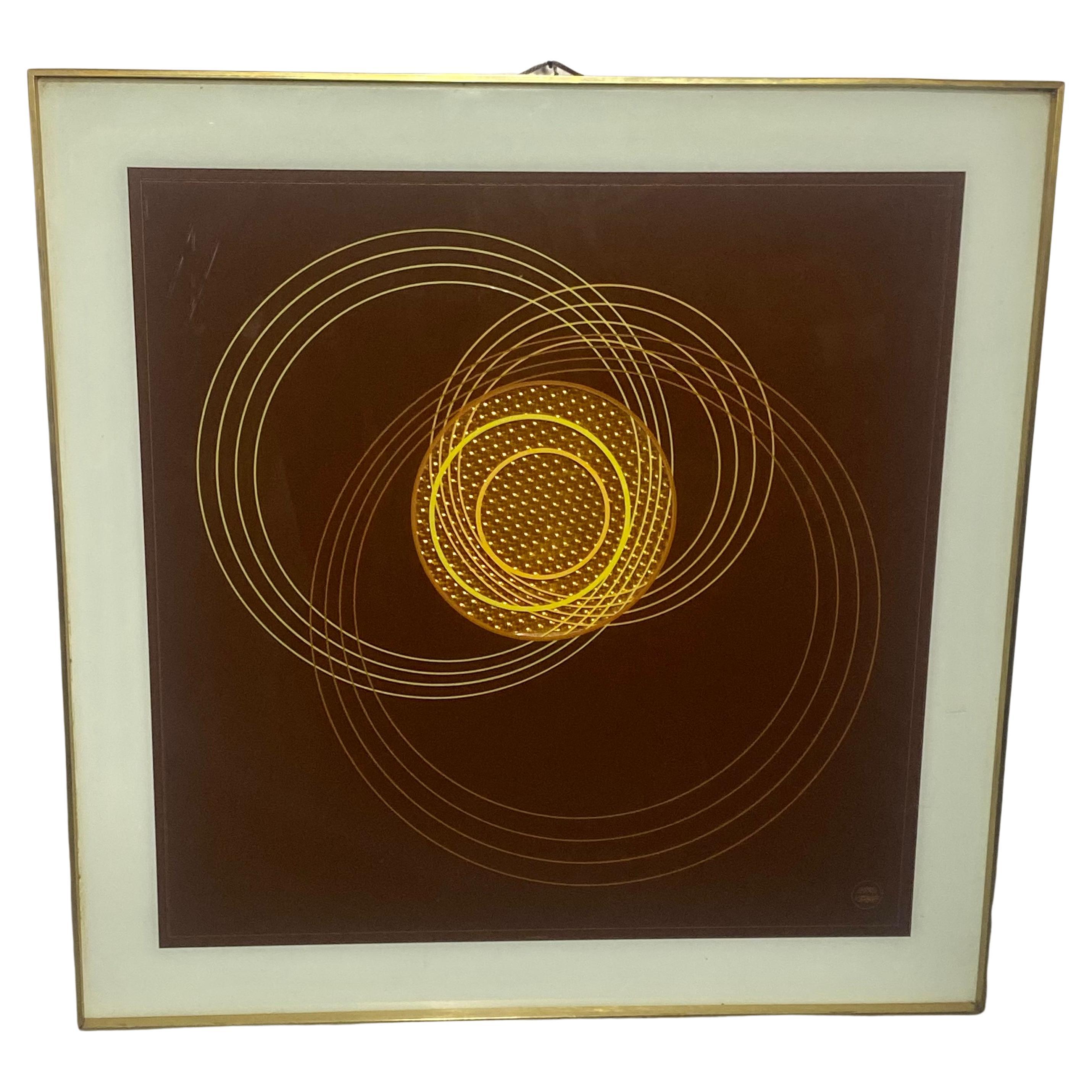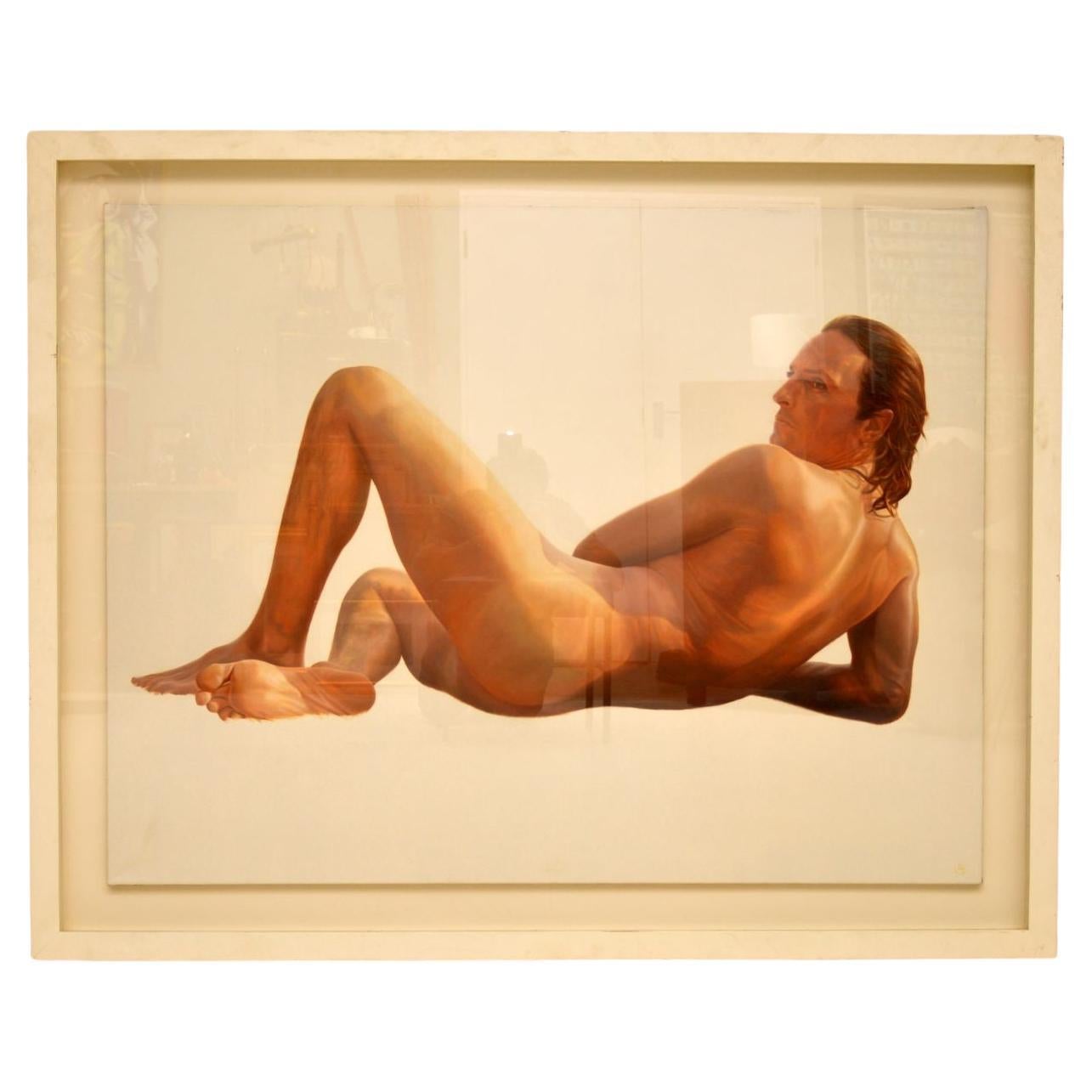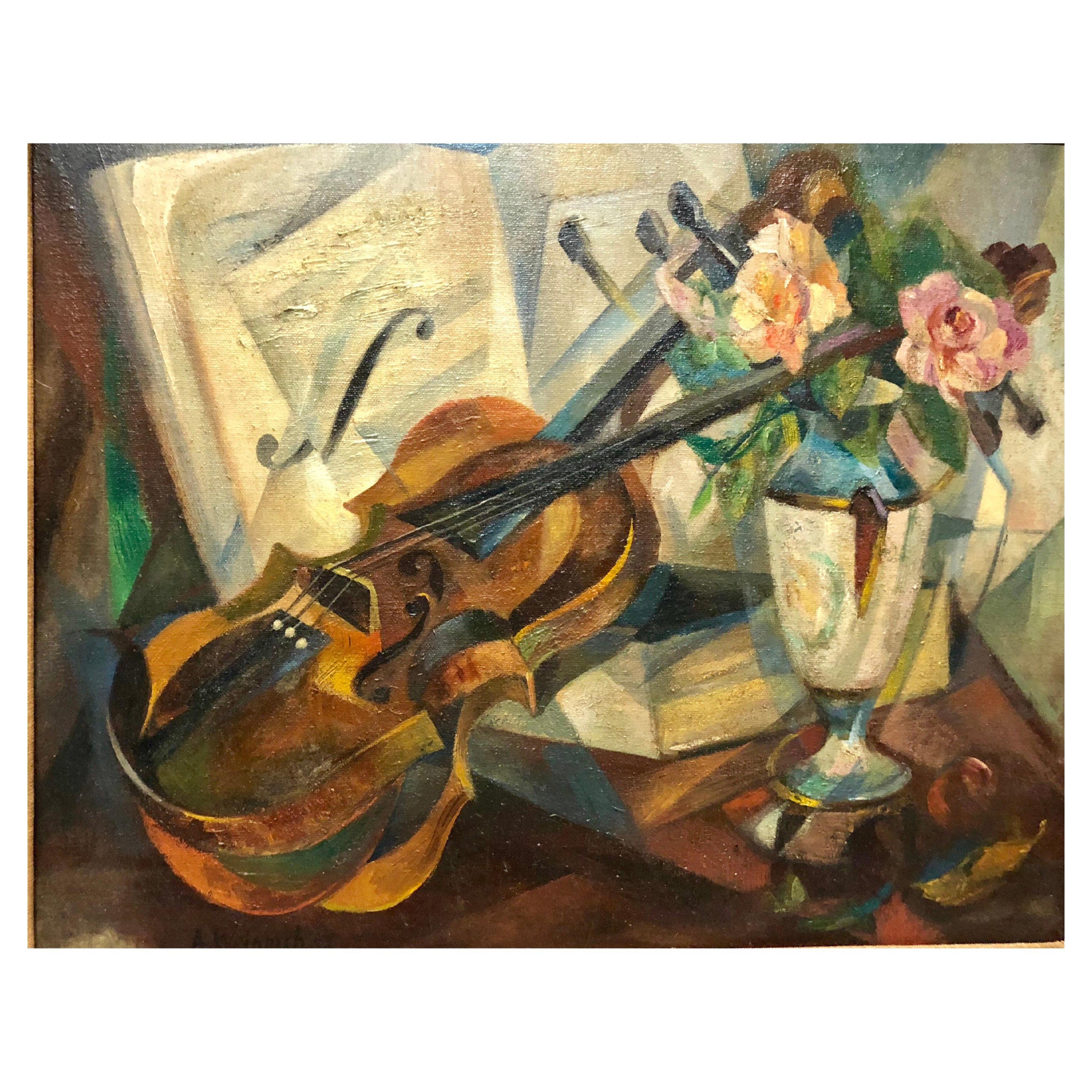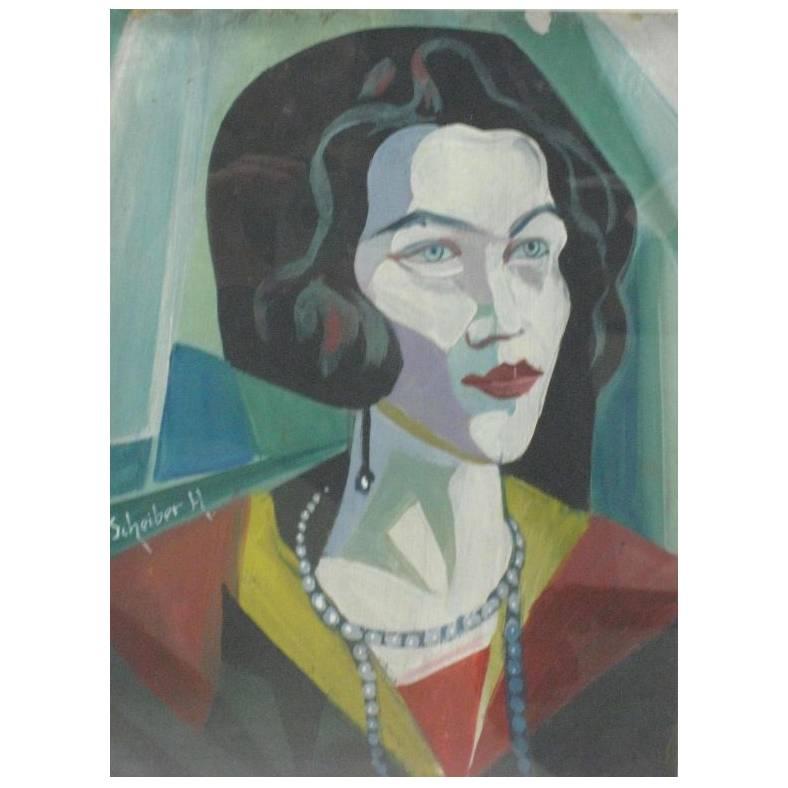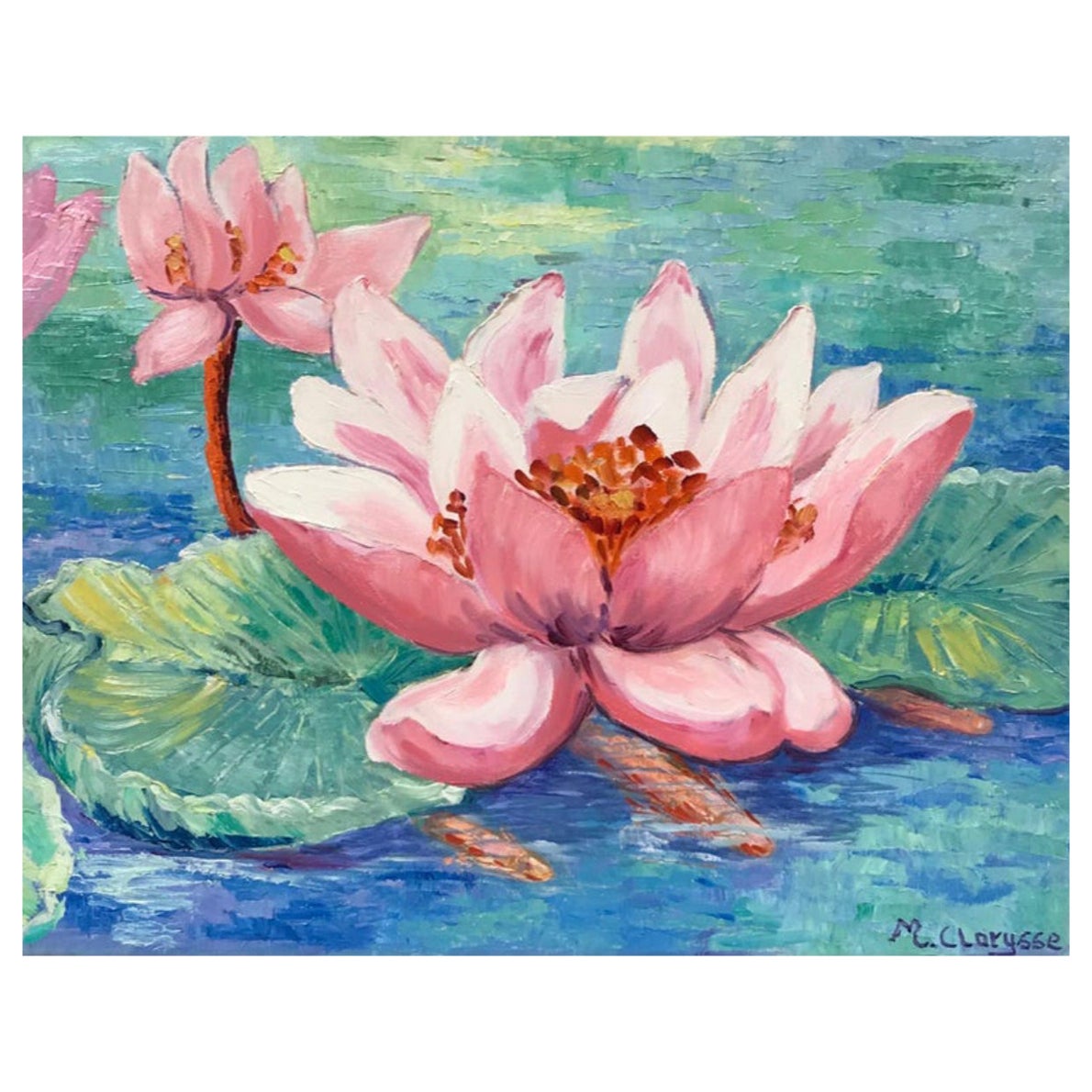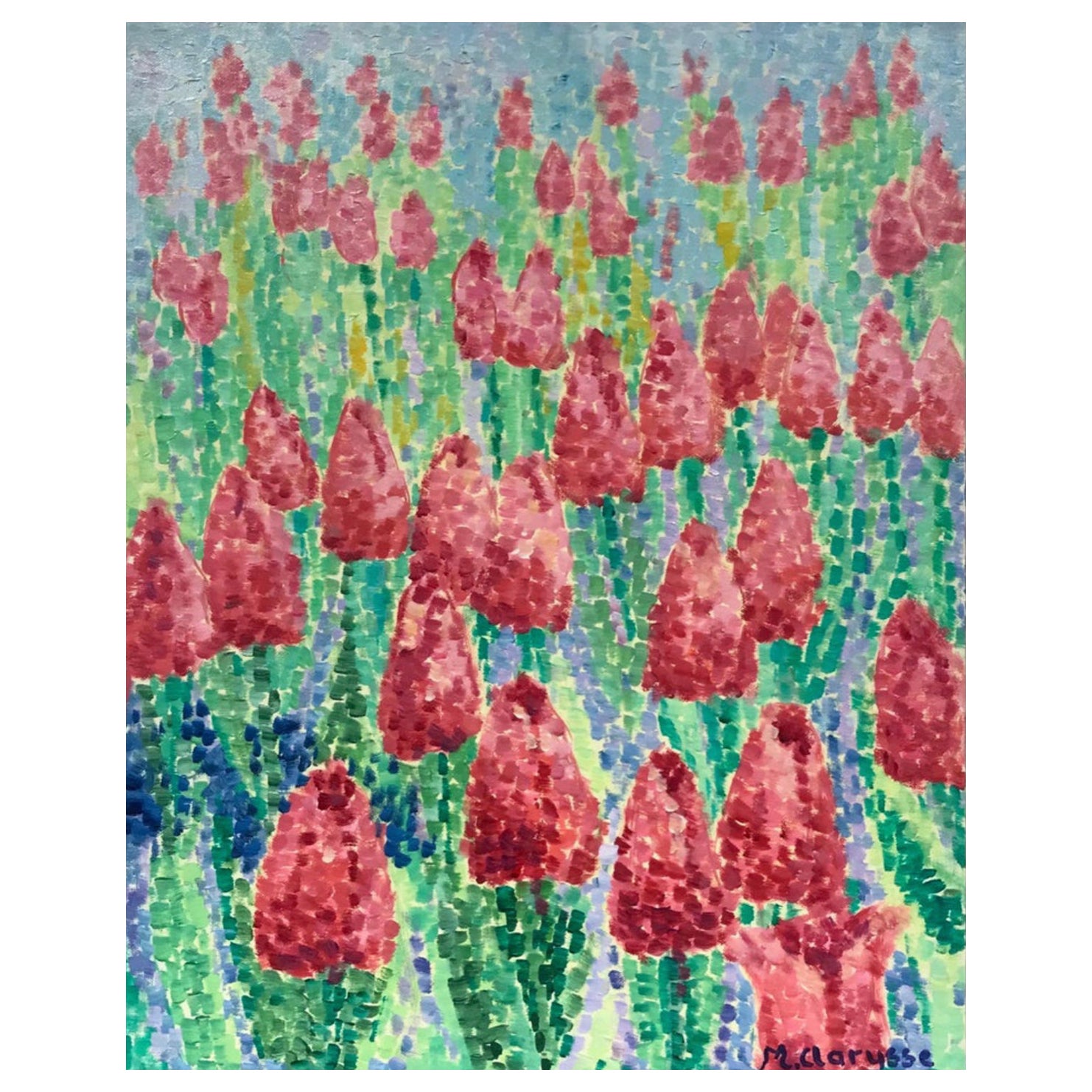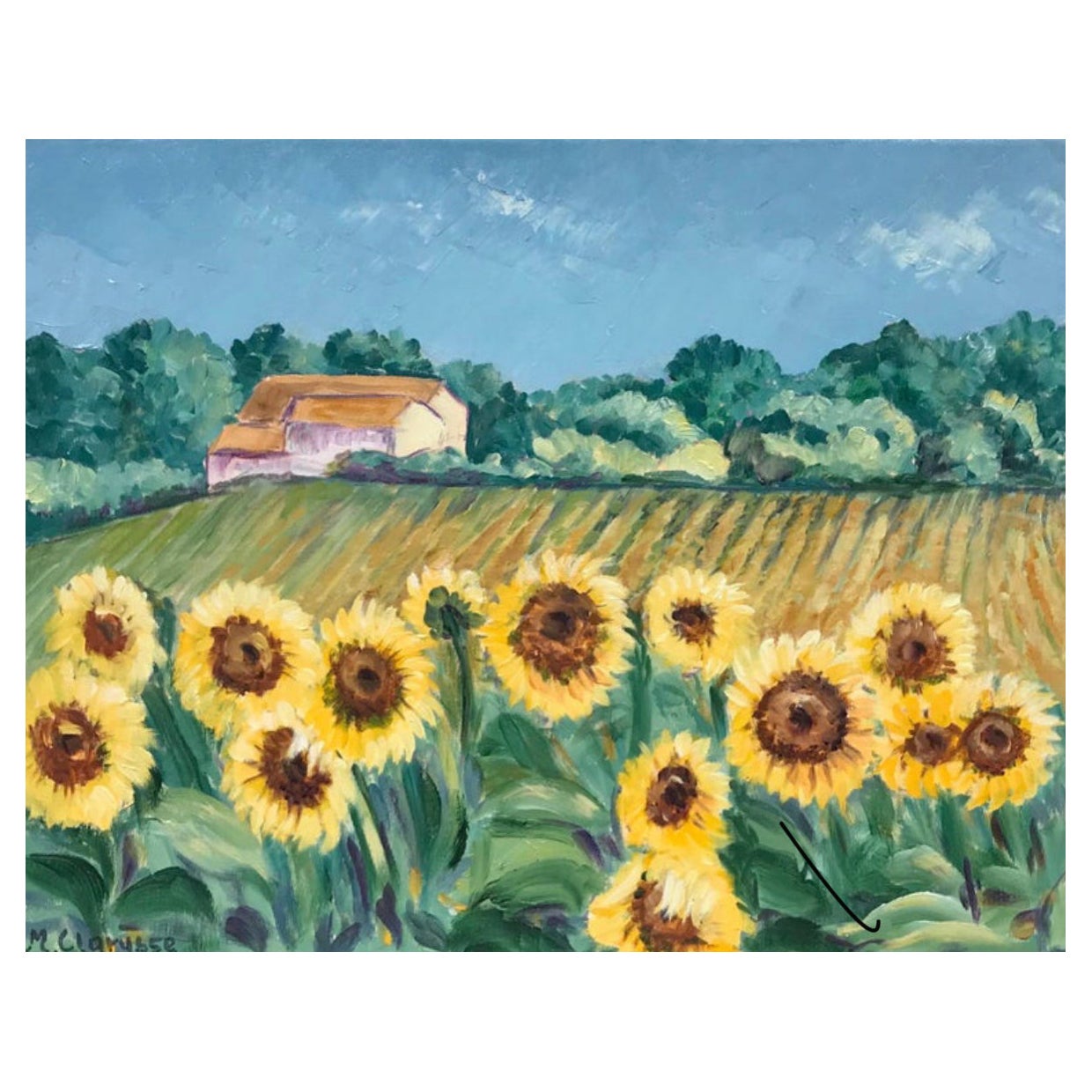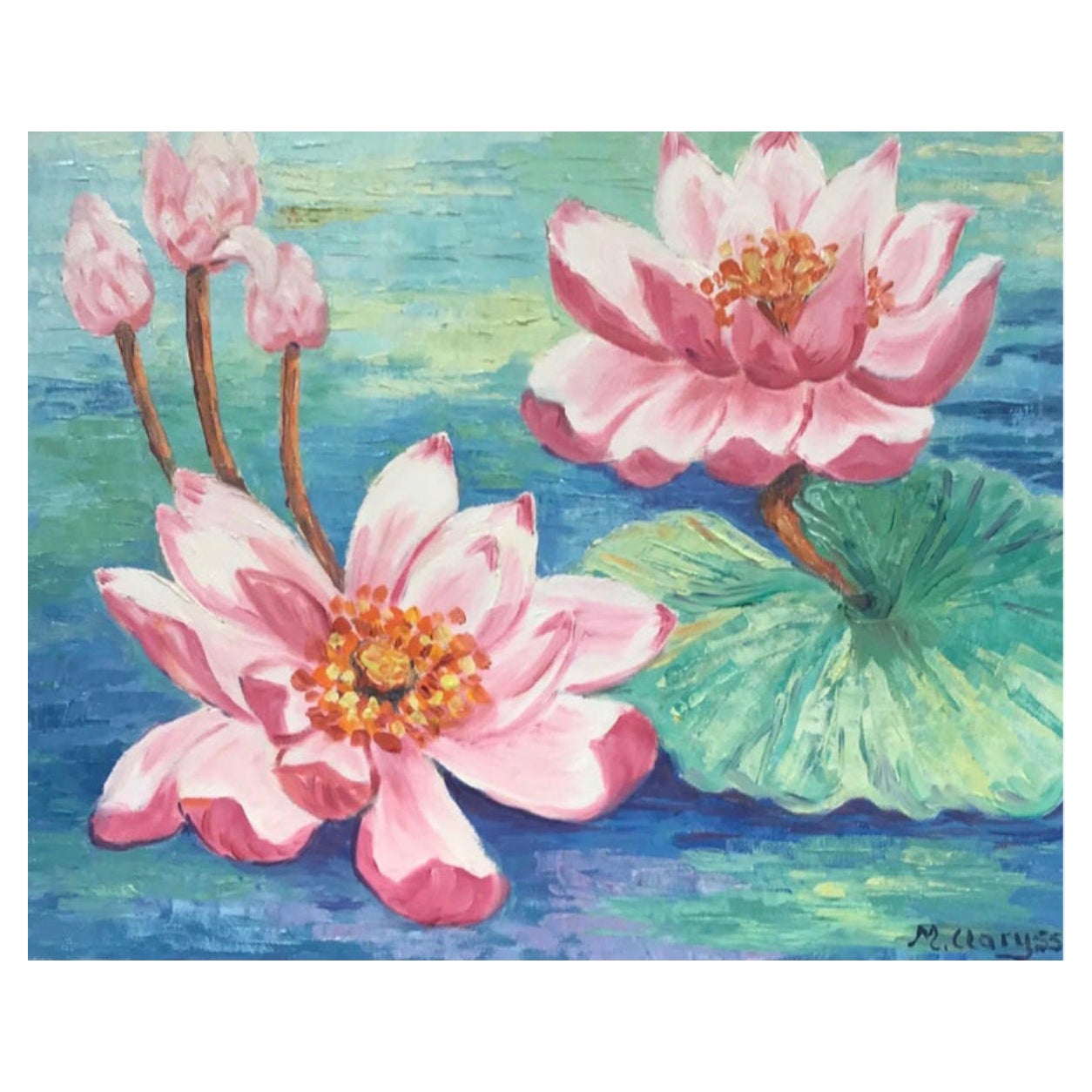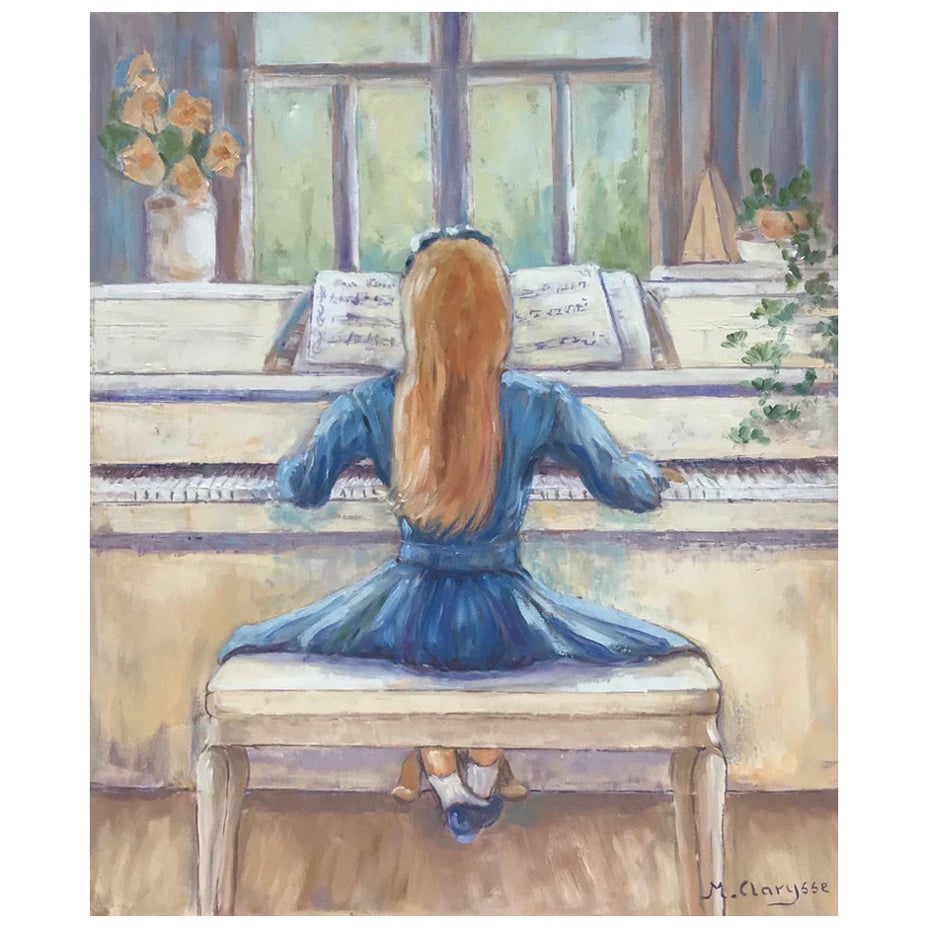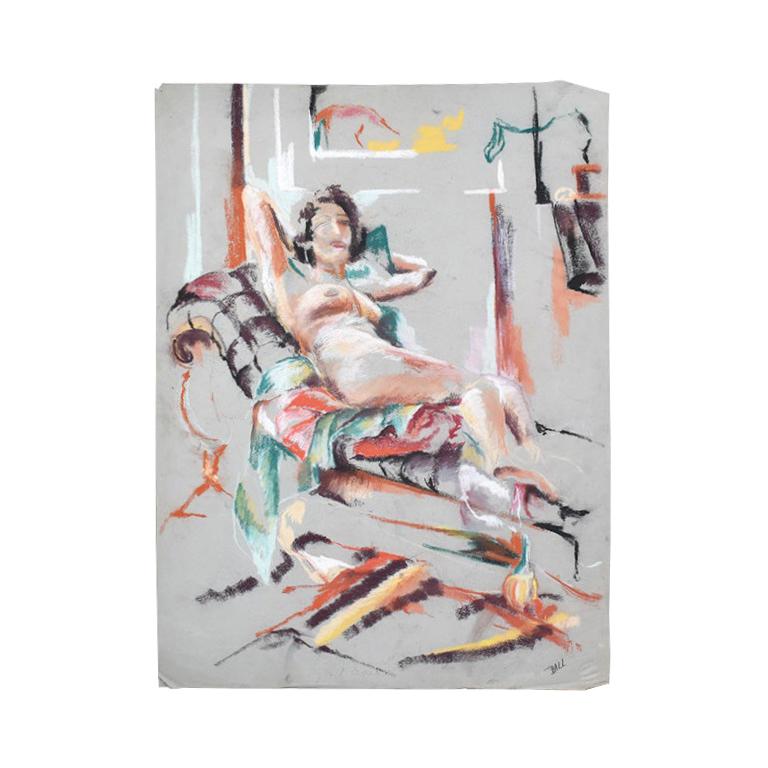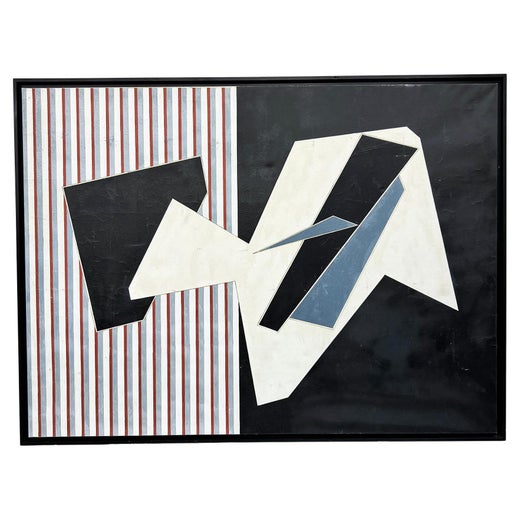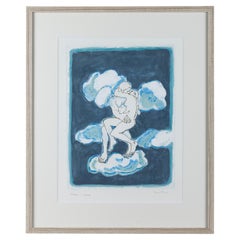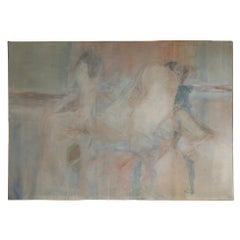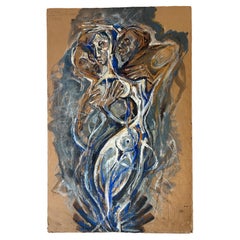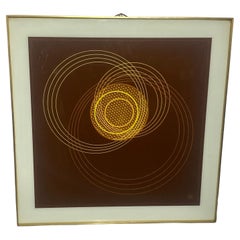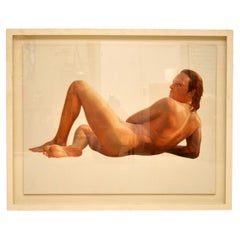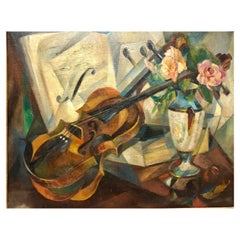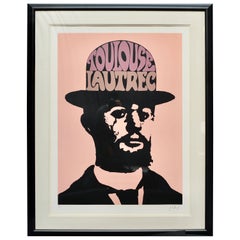
Constructivist Composition "Objet de l'espace" by Alain Le Yaouanc
View Similar Items
Want more images or videos?
Request additional images or videos from the seller
1 of 9
Constructivist Composition "Objet de l'espace" by Alain Le Yaouanc
About the Item
- Creator:Alain Le Yaouanc (Painter)
- Dimensions:Height: 70.87 in (180 cm)Width: 55.12 in (140 cm)Depth: 1.19 in (3 cm)
- Place of Origin:
- Period:
- Date of Manufacture:circa 1972
- Condition:Wear consistent with age and use.
- Seller Location:Paris, FR
- Reference Number:Seller: 20141stDibs: LU206537052583
Alain Le Yaouanc
Born in 1940, Alain Le Yaouanc is a French artist. At the age of 16, he joined the School of Harmon Hall in the USA, a country to which he is especially attached. He did his first drawings and paintings there, and he started exposing them too in 1957. He got an artistic formation at the Art Students League of New York, and he opened his first workshop there.
About the Seller
4.9
Gold Seller
Premium sellers maintaining a 4.3+ rating and 24-hour response times
Established in 2001
1stDibs seller since 2016
320 sales on 1stDibs
Typical response time: 1 hour
Authenticity Guarantee
In the unlikely event there’s an issue with an item’s authenticity, contact us within 1 year for a full refund. DetailsMoney-Back Guarantee
If your item is not as described, is damaged in transit, or does not arrive, contact us within 7 days for a full refund. Details24-Hour Cancellation
You have a 24-hour grace period in which to reconsider your purchase, with no questions asked.Vetted Professional Sellers
Our world-class sellers must adhere to strict standards for service and quality, maintaining the integrity of our listings.Price-Match Guarantee
If you find that a seller listed the same item for a lower price elsewhere, we’ll match it.Trusted Global Delivery
Our best-in-class carrier network provides specialized shipping options worldwide, including custom delivery.More From This Seller
View AllEngraving "Homage to Rodin" by Orfeo Tamburini
Located in Paris, FR
Engraving representing the symbolic 21st district of Paris realized in aquatint in colors. Entitled "Homage to Rodin", it represents The Kiss of the sculptor, two lovers embracing ea...
Category
Vintage 1980s French Paintings
Materials
Paper
Very large oil on canvas by Jean-Paul Barray
By Jean-Paul Barray
Located in Paris, FR
A very large oil on canvas signed by Jean Paul Barray and dated 1964. After graduating from Arts et Métiers in Saint-Étienne, he went on to study arch...
Category
Vintage 1960s French Contemporary Art
Materials
Canvas
Drawing and painting on paper by Pôl Roux "M'bour"
Located in Paris, FR
Pencil drawing enhanced with paint on paper mounted on a plywood support and frame, signed by Pôl Roux and titled "M'bour." It depicts two Senegalese women carrying faggots. He produ...
Category
1990s French Contemporary Art
Materials
Paper
Large painting of Vénus Anadyoneme by Pôl Roux
Located in Paris, FR
A large painting of Venus Anadyoneme, meaning "out of the waters", surrounded by two Giants, painted by Pôl Roux between 2007 and 2008 on cardboard mounted on a wooden frame. In the ...
Category
Early 2000s French Contemporary Art
Materials
Wood
Four Engravings of Paris by Orfeo Tamburini for the Series Paris 20+1
Located in Paris, FR
Views of the districts of Paris by the artist Orfeo TAMBURINI for the series "Paris 20+1". These engravings are made with etching and aquatint in colors. The artist signed them in pencil and they are published by Il Cigno in Rome between 1979 and 1981. The stamp of the publishing house is on the bottom right of the work. It is a limited edition of 130 copies. The frames are made of fair wood.
1st district - "strada di seza" (evening road) district of the Louvre with a view of the bouquinistes
5th district - "casa hotel" Pantheon district
17th district - "strada e nuvole" (road and clouds) Batignolles - Monceau district
18th district - "La casa nera" (the black house) district Butte Montmartre
Orfeo TAMBURINI (1910-1994), is an Italian painter and engraver. He is known for his representations of the urban fabric...
Category
Vintage 1980s French Contemporary Art
Materials
Paper
Very large diptych of silkscreen prints signed by François Boisrond
By François Boisrond
Located in Paris, FR
François Boisrond: Rêve de plage (1986). Very large diptych of color serigraphs on brown cardboard, signed lower right F. BOIS for one and ROND and dated 86 lower left for the other,...
Category
Vintage 1980s French Contemporary Art
Materials
Paper
You May Also Like
Original Optical Art by Ernst Lurker "Effentricity"
By Ernst Luker
Located in Buffalo, NY
Creator of the "Play Art" movement this renowned artist has been a Pratt Institute Graphics Professor as well as created and manufactured six designs for sale...
Category
Vintage 1970s German Post-Modern Contemporary Art
Materials
Aluminum
Large Oil on Canvass Nude Painting by Alan Brassington
Located in London, GB
A large and impressive oil painting of a male nude, by acclaimed British artist Alan Brassington. This dates from the late 20th century.
Alan Brassington specialises in portraits an...
Category
1990s British Modern Contemporary Art
Materials
Canvas
Cubist Still Life "Violin" by Early Modernist, Agnes Weinrich, Signed Dated 1922
By Agnes Weinrich
Located in New York, NY
Still life painting (Violin, Flowers), Oil on canvas, by Agnes Weinrich, Signed and dated "22", Unframed: 20" x 16", Framed 27.5 x 23".
Agnes Weinrich (1873-1946) was an early female, American modernist artist at a time when there was little interest in Modern Art in the USA and when few women were artists. She was a ground breaker in modern art. The painting shown is an important example of her mature phase of her work.
A biography from Wiki-pedia follows:
Agnes Weinrich (1873–1946) was one of the first American artists to make works of art that were modernist, abstract, and influenced by the Cubist style. She was also an energetic and effective proponent of modernist art in America, joining with like-minded others to promote experimentation as an alternative to the generally conservative art of their time.
Early years[edit]
Agnes Weinrich was born in 1873 on a prosperous farm in south east Iowa. Both her father and mother were German immigrants and German was the language spoken at home. Following her mother's death in 1879 she was raised by her father, Christian Weinrich. In 1894, at the age of 59, he retired from farming and moved his household, including his three youngest children—Christian Jr. (24), Agnes (21), and Lena (17), to nearby Burlington, Iowa, where Agnes attended the Burlington Collegiate Institute from which she graduated in 1897.[1][2][3] Christian took Agnes and Lena with him on a trip to Germany in 1899 to reestablish links with their German relatives. When he returned home later that year, he left the two women in Berlin with some of these relatives, and when, soon after his return, he died, they inherited sufficient wealth to live independently for the rest of their lives.
Either before or during their trip to Germany Lena had decided to become a musician and while in Berlin studied piano at the Stern Conservatory. On her part, Agnes had determined to be an artist and began studies toward that end at the same time.[1][4] In 1904 the two returned from Berlin and settled for two years in Springfield, Illinois, where Lena taught piano in public schools and Agnes painted in a rented studio. At this time Lena changed her name to Helen. In 1905 they moved to Chicago where Agnes studied at the School of the Art Institute of Chicago under John Vanderpoel, Nellie Walker, and others.[1]
In 1909 Agnes and Helen returned to Berlin and traveled from there to Munich, where Agnes studied briefly under Julius Exter, and on to Rome, Florence, and Venice before returning to Chicago.[5] They traveled to Europe for the third, and last, time in 1913, spending a year in Paris. There, they made friends with American artists and musicians who had gathered there around the local art scene. Throughout this period, the work Agnes produced was skillful but unoriginal—drawings, etching, and paintings in the dominant academic and impressionist styles.[1]
On her return from Europe in 1914, she continued to study art, during the warm months of the year in Provincetown, Massachusetts,[1] where she was a member of the Provincetown Printers art colony in Massachusetts,[6] and during the colder ones in New York City. In Provincetown she attended classes at Charles Hawthorne's Cape Cod School of Art and in New York, the Art Students League.[1]
Drawing of an old woman by Agnes Weinrich, graphite on paper, 11.5 x 7.5 inches.
Hawthorne and other artists established the Provincetown Art Association in 1914 and held the first of many juried exhibitions the following year. Weinrich contributed nine pictures to this show, all of them representational and somewhat conservative in style.[1]
A pencil sketch made about 1915 shows a figure, probably one of the Portuguese women of Provincetown. Weinrich was a metculous draftsperson and this drawing is typical of the work she did in the academic style between 1914 and 1920. She also produced works more akin to the Impressionist favored by Hawthorne and many of his students. When in 1917 Weinrich showed paintings in a New York women's club, the MacDowell Club, the art critic for the Brooklyn Daily Eagle said they showed a "strong note of impressionism."[7]
Broken Fence by Agnes Weinrich, a white-line woodblock made on or before 1917; at left: the woodblock itself; at right: a print pulled from the woodblook.
In 1916 Weinrich joined a group of printmakers which had begun using the white-line technique pioneered by Provincetown artist B.J.O. Nordfelt. She and the others in the group, including Blanche Lazzell, Ethel Mars and Edna Boies Hopkins, worked together, exchanging ideas and solving problems.[1][8] A year later Weinrich showed one of her first white-line prints at an exhibition held by the Pennsylvania Academy of Fine Arts in Philadelphia.[9]
Broken Fence, in its two states—the print and the woodblock from which she made it—show Weinrich to be moving away from realistic presentation, towards a style, which, while neither abstract, nor Cubist, brings the viewer's attention to the flat surface plane of the work with its juxtaposed shapes and blocks of contrasting colors.
Cows Grazing in the Dunes near Provincetown by Agnes Weinrich, white-line woodcut, 10 x 10 1/2 inches
When in 1920 the informal white-line printmakers' group organized its own exhibition, Weinrich showed a dozen works, including one called Cows Grazing in the Dunes near Provincetown. This print shows greater tendency to abstraction than eitherBroken Fence or the prints made by other Provincetown artists of the time. The cows and dunes are recognizable but not presented realistically. The white lines serve to emphasize the blocks of muted colors which are the print's main pictorial elements. Weinrich uses the texture of the wood surface to call attention to the two-dimensional plane—the paper on which she made the print—in contrast with the implicit depth of foreground and background of cows, dunes, and sky. While the work is not Cubist, it has a proto-Cubist feel in a way that is similar to some of the more abstract paintings of Paul Cézanne.[10]
By 1919 or 1920, while still spending winters in Manhattan and summers on Cape Cod, the sisters came to consider Provincetown their formal place of residence.[1][11][12][13] By that time they had also met the painter, Karl Knaths. Like themselves a Midwesterner of German origin who had grown up in a household where German was spoken, he settled in Provincetown in 1919. Agnes and Knaths shared artistic leanings and mutually influenced each other's increasing use of abstraction in their work.[1][14]
The sisters and Knaths became close companions. In 1922 Knaths married Helen and moved into the house which the sisters had rented. He was then 31, Helen 46, and Agnes 49 years old. When, two years later, the three decided to become year-round residents of Provincetown, Agnes and Helen used a part of their inheritance to buy land and materials for constructing a house and outbuildings for the three of them to share. Knaths himself acquired disused structures nearby as sources of lumber and, having once been employed as a set building for a theater company, he was able to build their new home.[15]
Weinrich was somewhat in advance of Knaths in adopting a modernist style. She had seen avant-garde art while in Paris and met American artists who had begun to appreciate it. On her return to the United States she continued to discuss new theories and techniques with artists in New York and Provincetown, some of whom she had met in Paris. This loosely-knit group influenced one another as their individual styles evolved. In addition to Blance Lazzell, already mentioned, the group included Maude Squires, William Zorach, Oliver Chaffee, and Ambrose Webster. Some of them, including Lazzell and Flora Schofield had studied with influential modernists in Paris and most had read and discussed the influential Cubist and Futurist writings of Albert Gleizes and Gino Severini.[16][17]
Mature style[edit]
Woman with Flowers by Agnes Weinrich, circa 1920, oil on canvas, 34 x 30 1/4 inches, exhibited at the Provincetown Art Association exhibition of 1920, made available courtesy of the Association.
Two of Weinrich's paintings, both produced about 1920, mark the emergence of her mature style. The first, Woman With Flowers, is similar to one by the French artist, Jean Metzinger called Le goûter (Tea Time) (1911).[18]
Red Houses by Agnes Weinrich, circa 1921, oil on canvas on board, 24.25 x 25.5 inches; exhibited "Red Houses" at Fifth Annual Exhibition of the Society of Independent Artists.
Like much of Metzinger's work, Le goûter was discussed in books and journals of the time—including one called Cubism co-authored by Metzinger himself.[19] Because the group with which Weinrich associated read about and discussed avant-garde art in general and Cubism in particular, it is reasonably likely that Weinrich was familiar with Metzinger's work before she began her own.
The second painting, Red Houses, bears general similarity to landscapes by Cézanne and Braque. Both paintings are Cubist in style. However, with them Weinrich did not announce an abrupt conversion to Cubism, but rather marked a turning toward greater experimentation. In her later work she would not adopt a single style or stylistic tendency, but would produce both representative pictures and ones that were entirely abstract, always showing a strong sense of the two-dimensional plane of the picture's surface. After she made these two paintings neither her subject matter nor the media she used would dramatically change. She continued to employ subjects available to her in her Provincetown studio and the surrounding area to produce still lifes, village and pastoral scenes, portraits, and abstractions in oil on canvas and board; watercolor, pastel, crayon and graphite on paper; and woodblock prints.[20]
Possessing an outgoing and engaging personality and an active, vigorous approach to life, Weinrich promoted her own work while also helping Karl Knaths to develop relationships with potential patrons, gallery owners, and people responsible for organizing exhibitions. With him, she put herself in the forefront of an informal movement toward experimentation in American art. Since, because of her independent means, she was not constrained to make her living by selling art, she was free to use exhibitions and her many contacts with artists and collectors to advance appreciation and understanding of works which did not conform to the still-conservative norm of the 1920s and 1930s.[1][21][22]
Early in the 1920s, critics began to take notice of her work, recognizing her departure from the realism then prevailing in galleries and exhibitions. Paintings that she showed in 1922 drew the somewhat dry characterization of "individualistic.",[23] and in 1923 her work drew praise from a critic as "abstract, but at the same time not without emotion."[24]
In 1925 Weinrich became a founding member of the New York Society of Women Artists. Other Provincetown members included Blanche Lazzell, Ellen Ravenscroft, Lucy L'Engle, and Marguerite Zorach. The membership was limited to 30 painters and sculptors all of whom could participate in the group's exhibitions, each getting the same space.[23][25][26] The group provided a platform for their members to distinguish themselves from the genteel and traditionalist art that women artists were at that time expected to show[27] and, by the account of a few critics, it appears their exhibitions achieved this goal.[1][28][29][30]
In 1926 Weinrich joined with Knaths and other local artists in a rebellion against the "traditional" group that had dominated the Provincetown Art Association. For the next decade, 1927 through 1937, the association would mount two separate annual exhibitions, the one conservative in orientation and the other experimental, or, as it was said, radical.[31][32] Both Weinrich and Knaths participated on the jury that selected works for the first modernist exhibition.[11]
Still Life by Agnes Weinrich, circa 1926, oil on canvas, 17 x 22 inches. Permission to use granted by Christine M. McCarthy, Executive Director, Provincetown Art Association and Museum. The painting was the gift of Warren Cresswell.
Weinrich's painting, Still Life, made about 1926, may have been shown in the 1927 show. Representative of some aspects of her mature style, it is modernist but does not show Cubist influence. The objects pictured are entirely recognizable, but treated abstractly. Although fore- and background are distinguishable, the objects, as colored forms, make an interesting and visually satisfying surface design.
In 1930 Weinrich put together a group show for modernists at the GRD Gallery in New York. The occasion was the first time a group of Provincetown artists exhibited together in New York. For it she selected works by Knaths, Charles Demuth, Oliver Chaffee, Margarite and William Zorach, Jack Tworkov, Janice Biala, Niles Spencer, E. Ambrose Webster, and others.[1][23]
Later years[edit]
Weinrich turned 60 on July 16, 1933. Although she had led a full and productive life devoted to development of her own art and to the advancement of modernism in art, she did not cease to work toward both objectives. She continued to work in oil on canvas and board, pastel and crayon on paper, and woodblock printing. Her output continued to vary in subject matter and treatment. For example, Still Life with Leaves, circa 1930 (oil on canvas, 18 x 24 inches) contains panels of contrasting colors with outlining similar to Knaths's style. Movement in C Minor, circa 1932 (oil on board, 9 x 12 inches) is entirely abstract. It too relates to Knaths's work, both in treatment (again, outlined panels of contrasting colors) and in its apparent relationship to music, something in which Knaths was also interested. Fish Shacks...
Category
Early 20th Century American Modern Contemporary Art
Materials
Paint, Canvas
Large Toulouse Lautrec by Peter Max in Peach Pink, Signed and Framed
By Peter Max
Located in Los Angeles, CA
This is the largest of the Toulouse Lautrec portraits by famed artist Peter Max in peach pink. Professionally framed, signed and numbered.
Category
Vintage 1960s American Modern Contemporary Art
Materials
Paper
$10,500 Sale Price
25% Off
Portrait of an Elegant Woman, Signed Hugo Scheiber
By Hugó Scheiber
Located in New York, NY
Watercolor / painting signed Hugo Scheiber: Budapest (1873-1950).
Hugo Scheiber was born in Budapest in 1873. At the age of eight, he moved with his family from Budapest to Vienna. ...
Category
Mid-20th Century Hungarian Mid-Century Modern Paintings
Bright & Colorful French Impressionist Oil Painting, Pink Lillies
Located in Cirencester, GB
Maggy Clarysse (1931-2011)
oil on canvas, unframed
16 x 20 inches
signed front and back
condition: excellent
provenance: all the paintings we have by this artist have come from ...
Category
20th Century Contemporary Art
Materials
Other
Recently Viewed
View AllMore Ways To Browse
Alejandro Jodorowsky
Contemporary Modern Murano Chandelier
Italian Wall Panels
Marble Classic Table
Milk Light
Antique Large Pendant Lighting
Beaded Chandeliers
Bed Mattresses
Flower Side Table
Vintage Christofle
Vintage Two Piece Set
Vintage Wool Sofa
Wall Panel 19th Century
Air Pendant
Delicate Side Table
Eclectic Sofas
French Table Cabriole
Glass Shade Only
